To try and define concept art is, in a way, to attempt defining creativity itself.
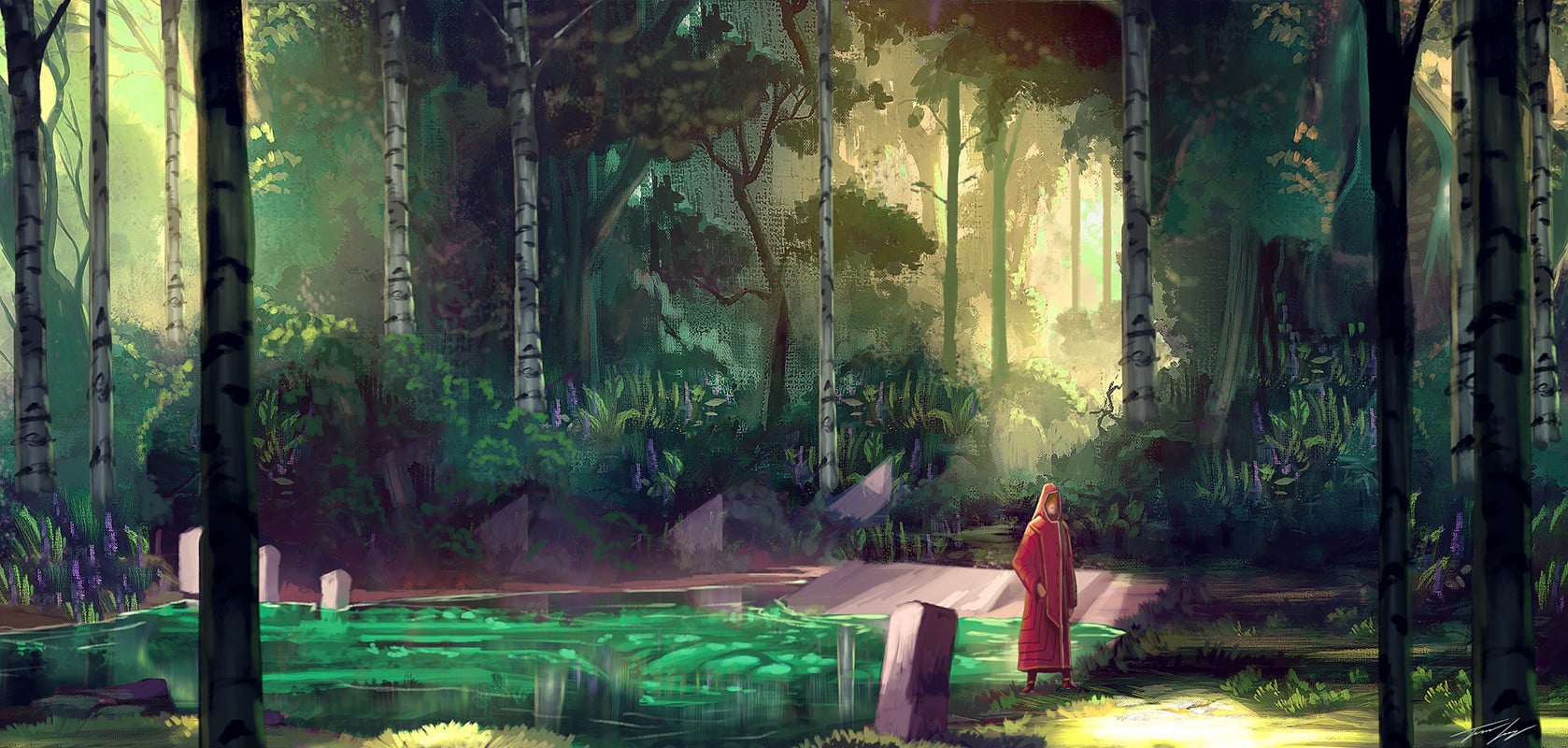
In recent times, concept digital art has established itself on a level that’s as high up as any traditional form of art. But the one thing that sets it apart as a unique area altogether is its ability to transform conventional art by animating them on screen!
And we bet no other thing in this world could ever bring a real dragon to you if it’s not digital art! (well, except ancient Asian magic, we suppose)
The task of a concept artist is to primarily come up with ideas and fit them into a narrative to create a digital project. Concept artists, in various ways, design such ideas in certain styles and ways so that they could complement the narrative.
And if you are an aspiring concept artist, then you gotta know a thing or two about how the different types of concept art make up the digital art industry!
Featured Image via Travis Lacey
So, here’s a guide on the subject that will not only explain these categories for you but will also tell you how to pursue them for your career goals!
Types of Concept Art
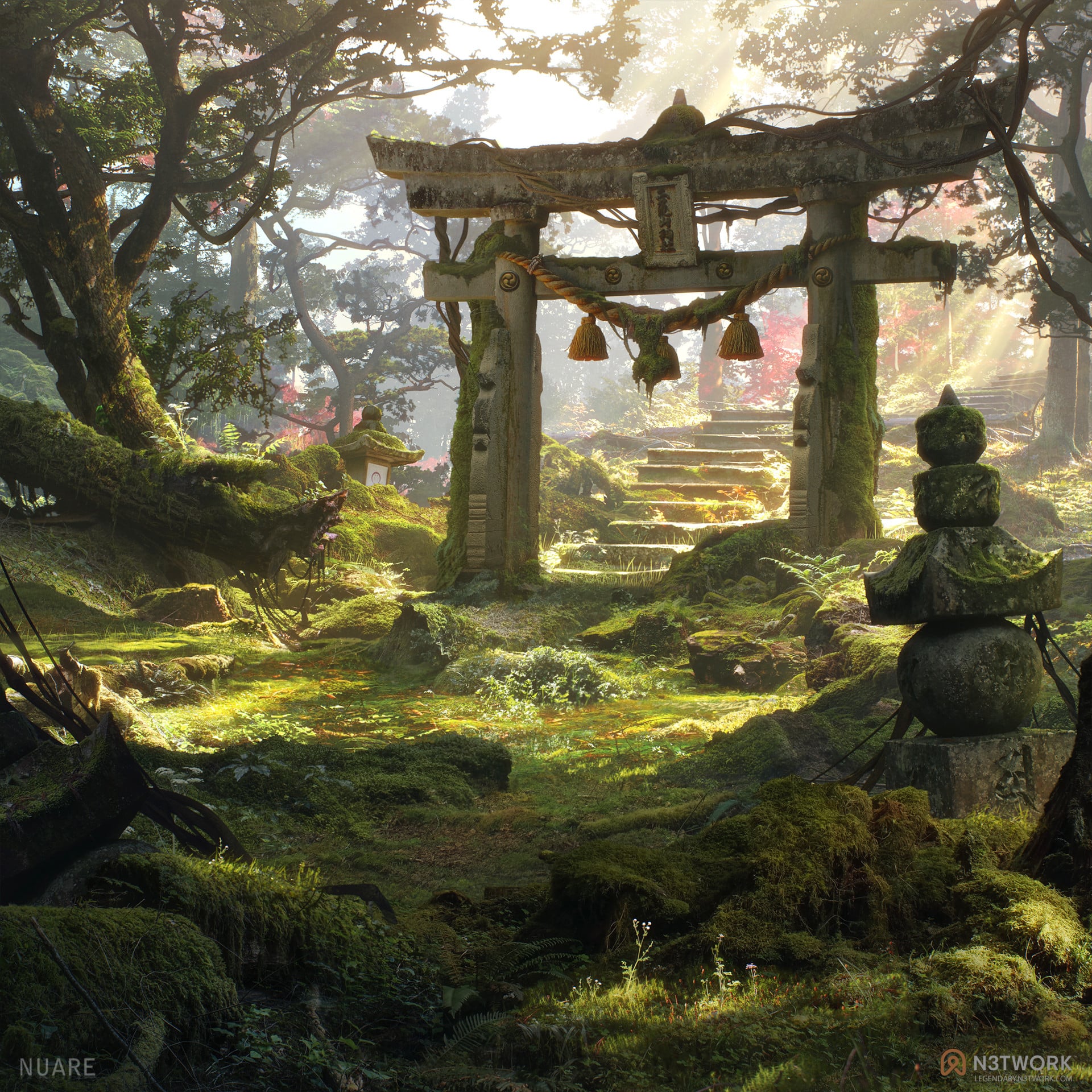
Image via Christian Dimitrov
-
Environment Concept Art
Environment Concept Art primarily focuses on structuring and designing landscapes. It is used for setting and defining the place of the action and estimating the time of the action sequence.
Since the setting of this sequence is one of the most challenging aspects of environmental concept art, the skill sets for the artist will require them to possess a good eye for composition, architectural design, and perspective.
Environmental concept art emphasizes the layering and texturizing of the overall layout of the image. Each stroke on the screen that goes into creating the scene should be in accordance with the rest of the subjects, props, and the kind of action that is soon going to take place.
For instance, if an adventurous sequence is going to take place on a sunny day, then the overall layout with all its color and tonal variations would be much different texturally and visually than the one which is meant to portray a much laidback or calming sequence. There would be a considerable difference in the mood of the two sequences.
These environmental sequences are mostly created using 3D software where the artist is in complete charge of reflecting and translating all the digital elements in the final designs. This will form the atmosphere and mood that the project requires.
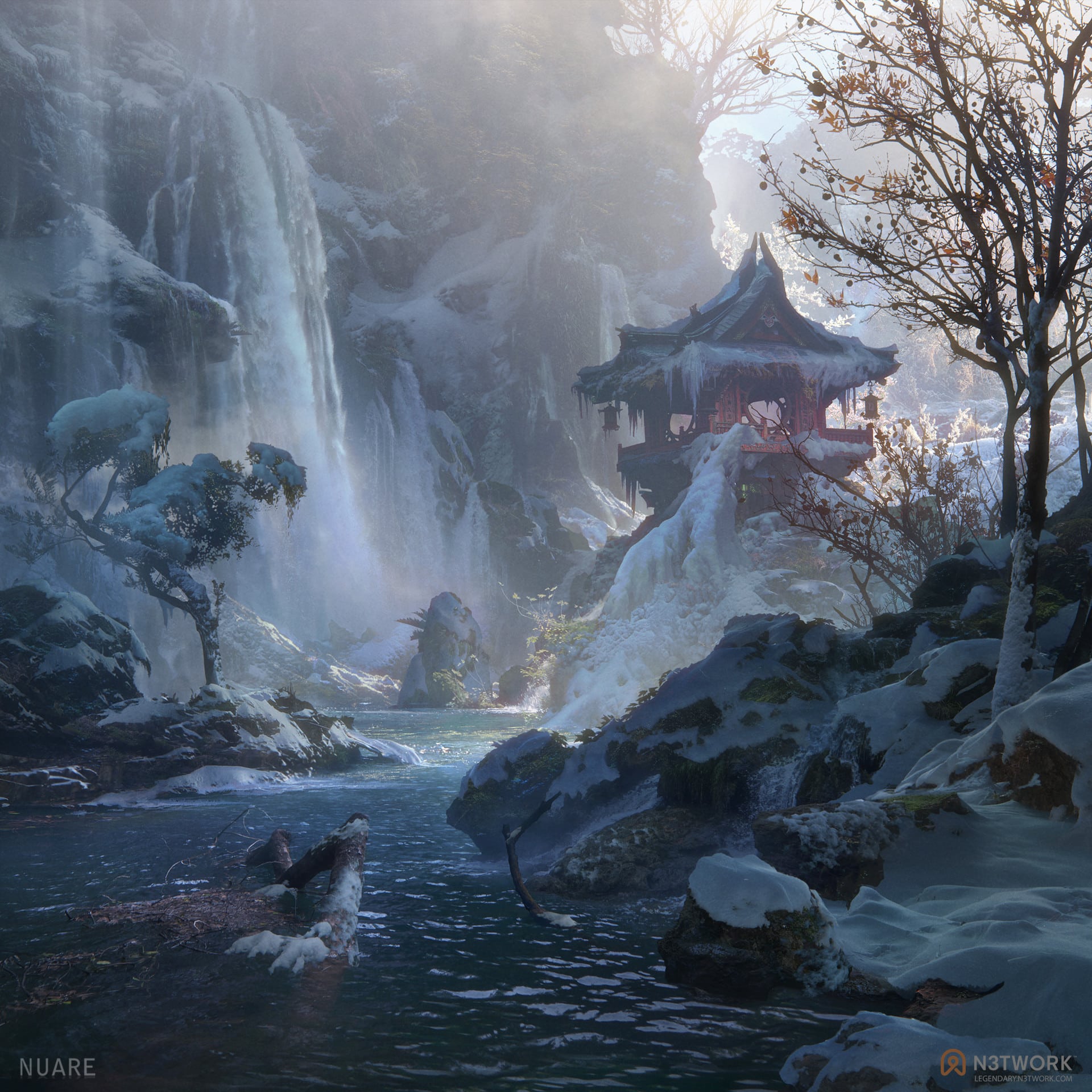
Image via Christian Dimitrov
Essentials to understand
Understanding the fundamentals of designing anything is the first step to get the job done successfully and in the best way. However, it is only by regularly practicing what you are trying to depict that will help you perfect your art. This holds true for every kind of conceptual art form.
If you do want to take up designing environments, then you should focus on correcting your perspectives first. This plays a significant role in each piece.
Remember that, if any part of your perspective does not fit with the rest of your design, then it may ruin the entire effect of the painting. Environment artists also have to be swift and deft with their art portrayals as that is a crucial aspect of depicting any fantastical or foreign object in an equally unfamiliar environment, such as aliens on a strange planet.
As an environment artist, your primary task would be to imagine and visualize the worlds that don’t exist and turn them into convincing, real thing for your audience to marvel at.
Apart from fundamentals, you need to have an eye for great design and understand the basic objects such as plants, animals, the natural and geological attribute at least to the point where you would be able to easily replicate these ideas.
Once you do understand these essential points, you should really practice environments as much as you can. You can even create a series of thumbnail sketches and painting over a set period of time like a month or so.
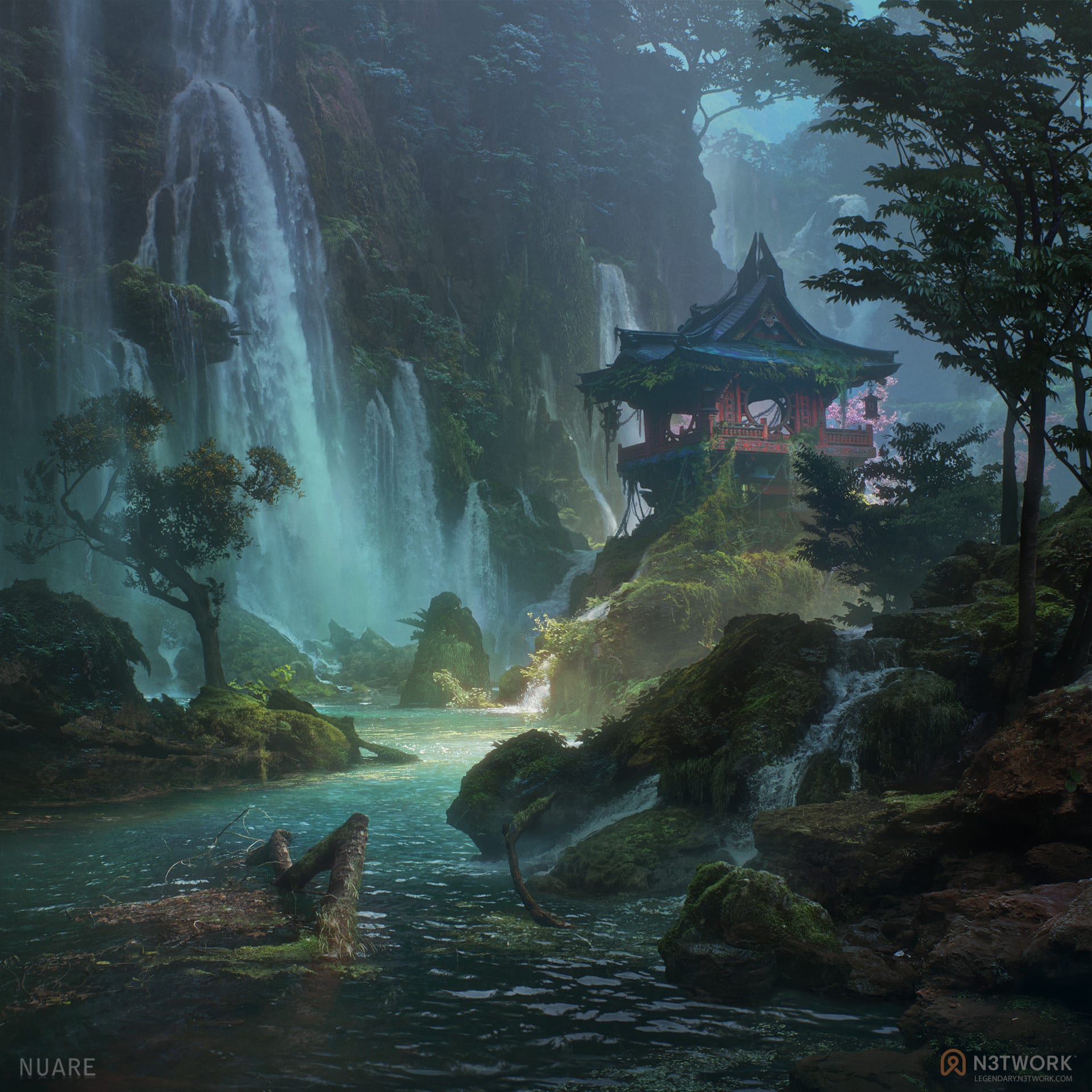
Image via Christian Dimitrov
Suggested Approach
It could initially be a pretty challenging job for a paid concept artist to manage all of it on their own when they start creating stuff at first as they will not get to choose what they create. You may select a particular look for your art, but it’s always gonna be the client or the studio who makes the final, decisive call.
And this means that you will have to be an expert enough to portray anything they ask for, whether it is a plush manor interior, a serene village escape or a sandy desert landscape. This will be a real test of your versatility as an artist.
And since environments can often have people in them as well, you will have to be clear in your understanding of human anatomy and gestures as well as understand the height and weight differences.
References and tips
A good way of adding perspective to your work is by adding a person or animal somewhere in the environment. You could find impressive artworks demonstrating the use and placement of birds for defining perspective in a project on subreddit/r/BirdsForScale.
For learning or brushing up on the basics, you could comfortably rely on Scott Robertson’s How To Draw.
The selection of colors and creating a color scheme is what makes or breaks an art project be it traditional or digital. However, for designing environments digitally, you can get sufficient help from two of these reference guides that will help you learn and progress far in your studies: Color and Lightand Imaginative Realism, both by artist James Gurney.
-
Character Concept Art
Character concept art emphasizes the overall creation of the convincing characters as well as the creatures for the project. The required skills set for a concept artist mandates them to possess the ability to create and coordinate the different aspects of the characters. These attributes include everything from the costumes, anatomical features, and color variations to the overall movement of the structure and gestures of the character.
The artist is required to have substantial knowledge of human and animal anatomy as well as the perspective to portray them in the right ways.

Image via Sangsoo Jeong
This is required for creating realistic body types. But more than that, it’s needed to create fantastical creatures and beasts and monsters.
The artist’s in-depth knowledge of anatomy and biological features of humans and animals allows them to create marvelous and compelling characters of creatures that do not exist in real life.
The artist solely does this by basing the creature’s design on the natural proportions of whatever it has been inspired from or just any other point of reference. Conforming to these vital rules of proportions is what makes the make-believe world created by the artist to actually seem believable.
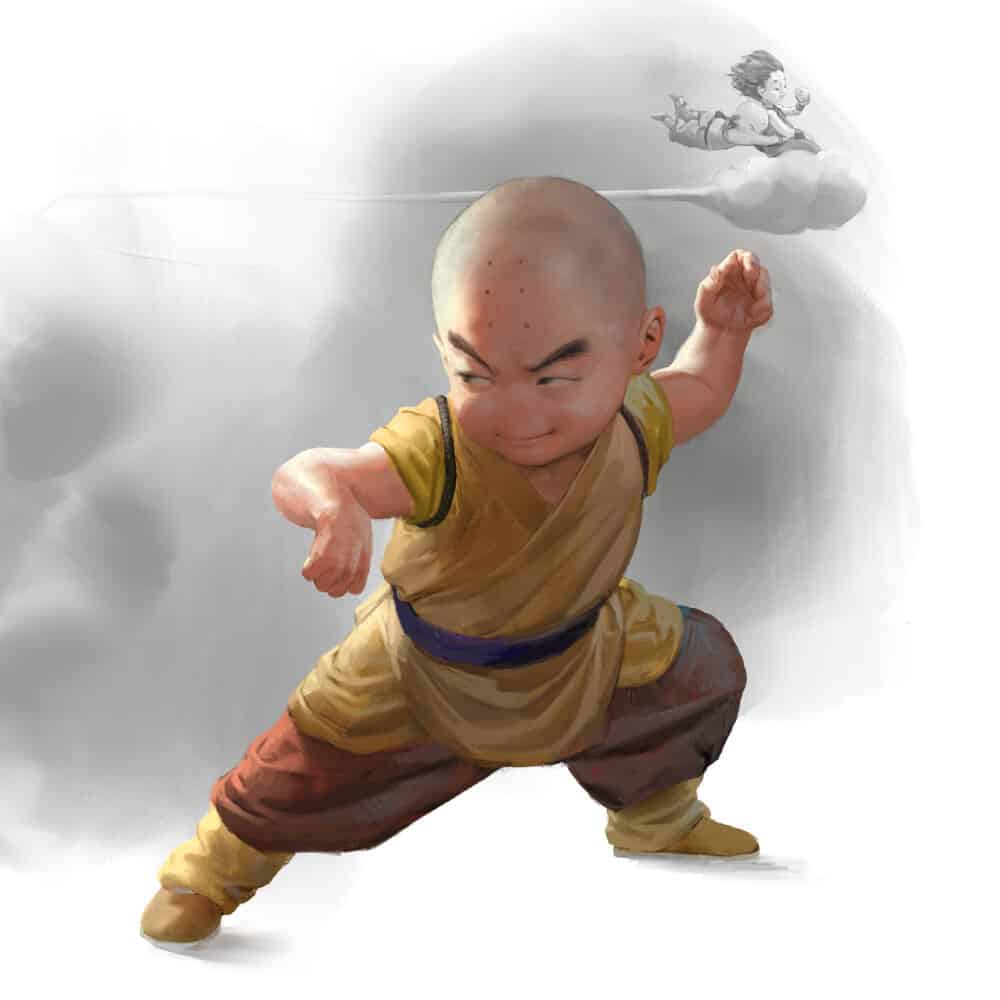
Image via Sangsoo Jeong
Essentials to understand
Designing characters is one of the most in-demand jobs in the field of digital arts. The designer artists are paid to create characters that are based on the background, personality traits, as well as other design features that are recommended by the client or studio.
Although the initial designs are mostly etched out in 2-dimensional forms and structures, for the most part, the 3-dimensional renders of the designs are what the industry is actually centered around. Some of the highest level projects also involve both 2D and 3D with more number of artists taking up the task for both kinds together.
Artists designing characters for video games usually have a style that is different than that which visual development or character artists generally use for animation. Animation actually gives more freedom to the artist to try out various creative styles than just plain realism.
This also means that the illustrators may, at times, choose to venture on the character route with their focus more on creative animation than the conventional techniques of depiction.
It is, in fact, just as competitive as designing for video games, and hence, the jobs are similar when it comes to quantity. However, if you are confident that you’re good at, you need not worry about placements at all!
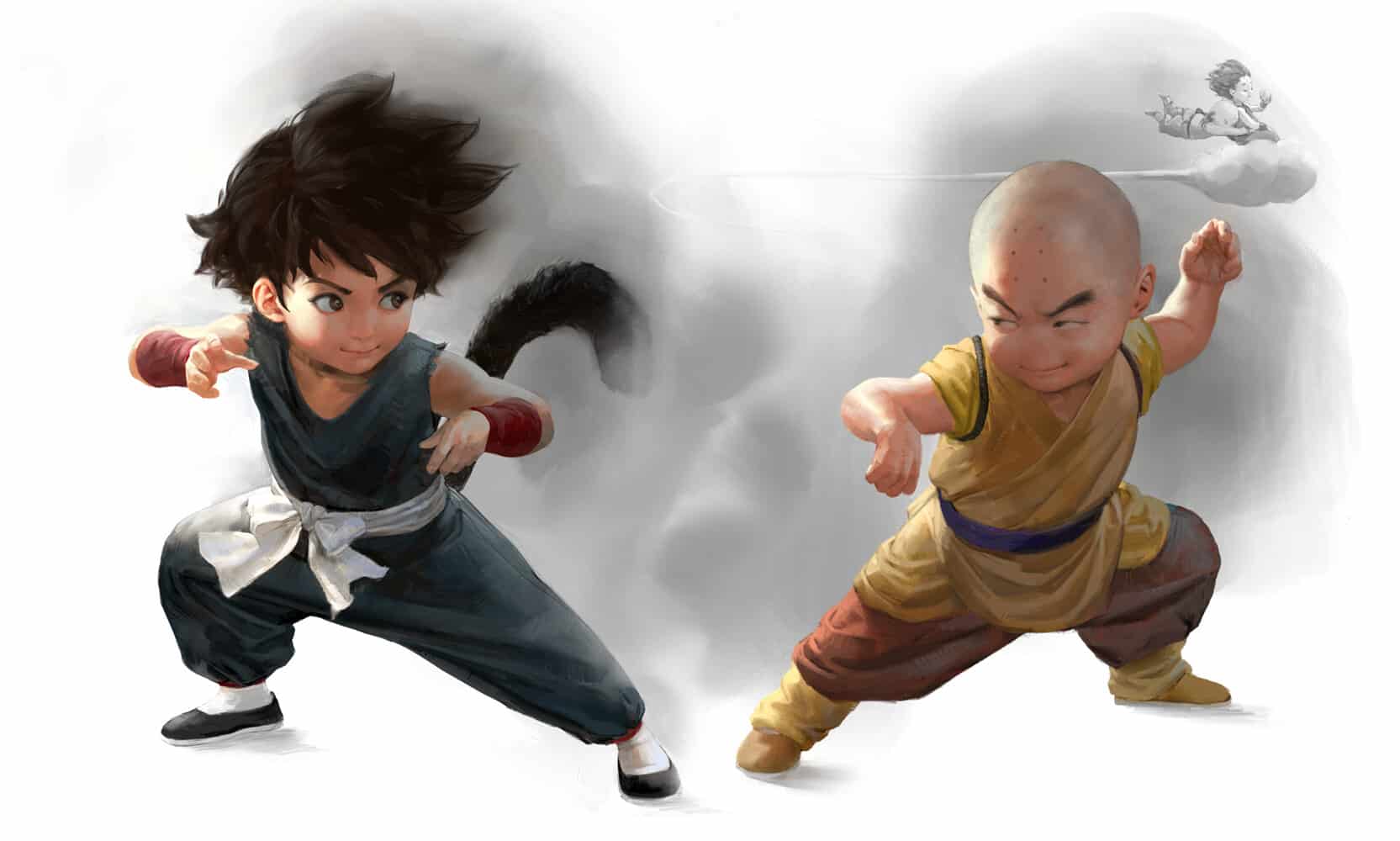
Image via Sangsoo Jeong
Suggested Approach
To get a good place in this field, you would have to put many hours into perfecting your skills. The quality of your work is going to be the be-all and end-all in this line of work, and that is what is going to pave your way to success. Practicing will help you understand the requirements for character art and the things you could do to speed up your learning process.
As soon as you understand all the fundamentals of character designing, you would want to dive headfirst into etching out your characters from all angles.
You could look up these inspiring and unique examples created by Moize Opel for a head start.
Character artists can often get assigned with the task of designing fantastical creatures and monsters, mostly for video games. These are often the villains encountered in in-game battles. This requires minute details and just the right levels of movements to be rendered in a realistically simulated action.
References and tips
It goes without saying that character designers work tirelessly to come up with a brilliant and unique idea to animate on the screen for you. With dedication, hard work, and a genuine love for story-telling, you could make it real big in this department.
Being involved in the community for character concept art is one of the best aspects of it. From character art forums to character artist interviews and also other related YouTube Videos, you find a lot online to help you in this field.
You could even check out these books that cover practically everything from basic designed to digital painting technique:
- Mastering Fantasy Art-Drawing Dynamic Characters
- Character Design from the Ground Up
- Funny!: 25 Years of Laughter from the Pixar Story Room
- Creating Animated Cartoons with Characters
-
Weapon and Asset Design
The concept art of creating weapons is actually one of the most challenging tasks in the digital concept art department. This focuses on the creation of weaponry that is meant to be used by the characters in the sequence and the other beings in the plot who are supposed to populate the world that the project will be depicting for its audience.
Similar to the creation of all the environments, weapons and assets are also designed using 3D software.
This artist digitally designing weapons and assets should be proficient in the knowledge of the processes of creation used in industrial designs. The statistics and calculations involved in the charting of industrial designs involve pretty tedious calculations and equations.
Digital engineering required to give shape and form to these objects of warfare also requires for the artist to understand how to customize a particular weapon for the main characters. This will also depend on the nature of the character.
This type of art also provides a vital insight into the department of product designing.
-
Vehicle Design
Pretty similar to designing weapons and assets, creating the layouts for vehicles is a vital part of producing industrial designs. It is undeniably a pretty tough cookie to crack when it comes to the calculations and equations part of designing.
The designing of vehicles requires the artist to have a thorough knowledge of the programs and tools that are required to chart what could traditionally be called a car or aircraft design.

Image via DARKO DARMAR MARKOVIC
However, in such an industry that deals with the modes and means of digital entertainment, the artistic approach deviates from the obvious and conventional designs that are found in the automobile and aeronautical industry.
It so happens that a concept artist who is working on films and video games will often find himself designing fantastic vehicles such as strange spacecraft or flying cars.
So, what we can understand from this is that that reference points to any industrial structures or designs will be mandatorily based on realistic objects forming the base for all such layouts.
-
Props Design
The most important requirement for a digital artist is to be able to design any object from any given angle. Since 3-dimensional projections could be extremely challenging to equate and calculate, it usually takes a well-informed and well-experienced expert to make carefully reviewed choices and approaches when it comes to designing.
And more than being restricted to just video-game designing, creating prop-layouts is one of the essential dimensions of animated movies or TV series.
The visual development artists involved in the project have to first experiment with the different colors and tonal variations in order to be able to set a specific mood and edge to a single sequence.
If you want to practice designing props, you can start by studying anything that appeals to you. Apart from mentally determining the properties of the object itself, an artist has to closely observe and analyze the styles and aesthetics of different periods to place a prop correctly in the appropriate frame and the sequence to which it belongs.
For instance, the props for a story that has been set in the Victorian era in Britain will be very different from the props that should be in a sequence from, say, the American civil war.
It goes without saying that all celebrated artists have always observed and drawn inspiration from what they have seen around them in real life. The history and evolutionary phases of everything had always played the greatest part in studying the structures and forms of whatever it is that you’re keen to depict.
One of the ideal things that you can do is take a tour to museums or old, heritage places and houses. You could keep a sketchbook and doodle to capture every form that appeals to you.
Drawing will help you understand the shapes and structures better as well as enrich your “visual library” of new ideas.
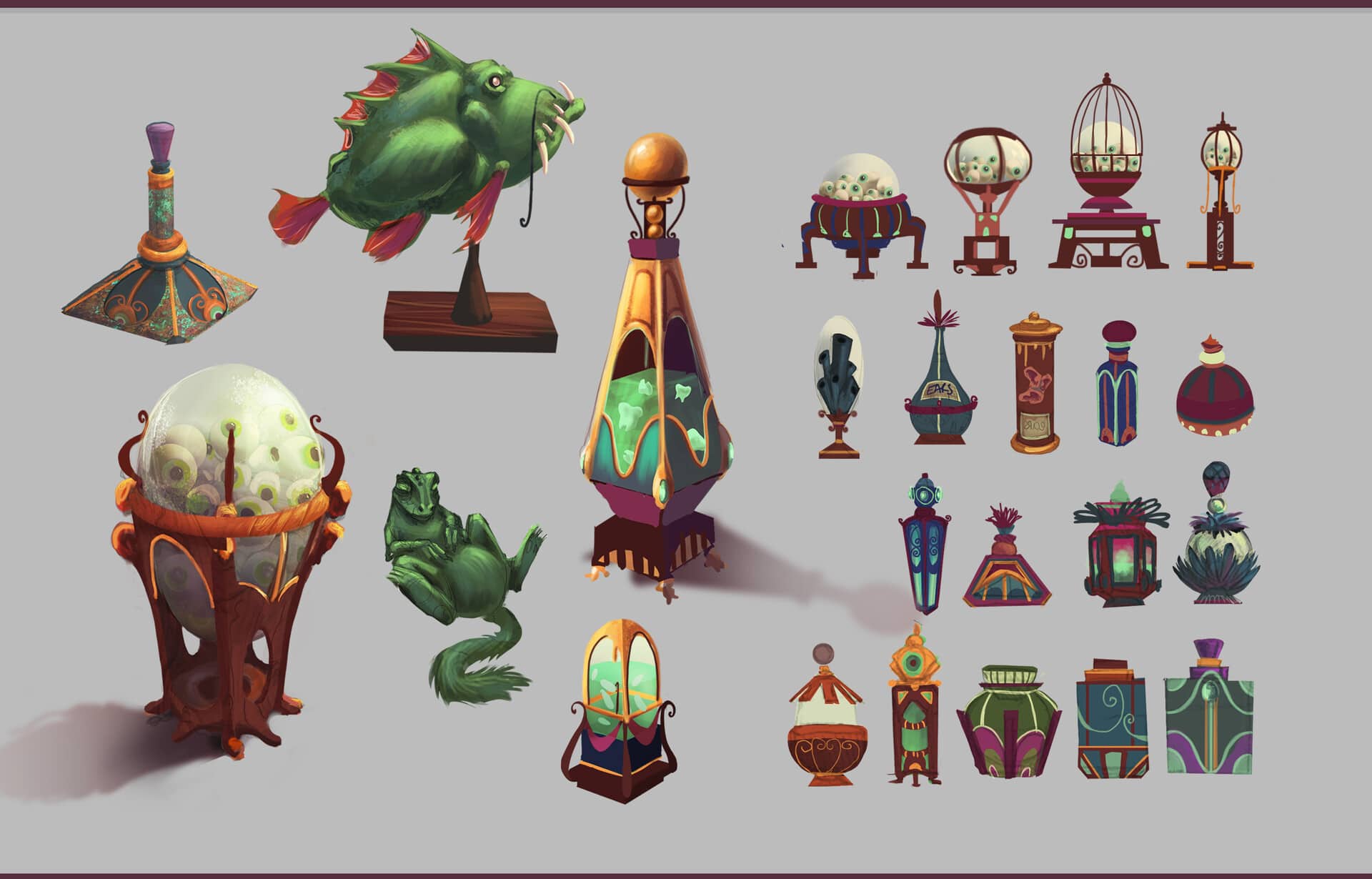
Image via POCH Romane
Essentials to understand
Even the most ordinary, commonplace objects such as stoves, lamps, tables, and literally anything that you want to place in your imaginary world. Because these design and style will provide you with an essential insight into the evolution of designs throughout the ages.
It is entirely up to the designer of props to imagine and visualize how a certain thing will look from different angles and to render the minute details to them accordingly, from scratch!
Artists who take up the task of designing props may often specialize in different types of designs and layouts. While some may take up designing commercial objects of various sorts and kinds such as clothes, domestic things, or other stationery, some artists might take up designing vehicles or weapons specifically.
And even if it isn’t a score on your versatility as an artist, if you are indeed good enough in a specific area of digitally designing props, you stand a fair chance of getting noticed and hired by top-notch studios for freelancing on major projects.
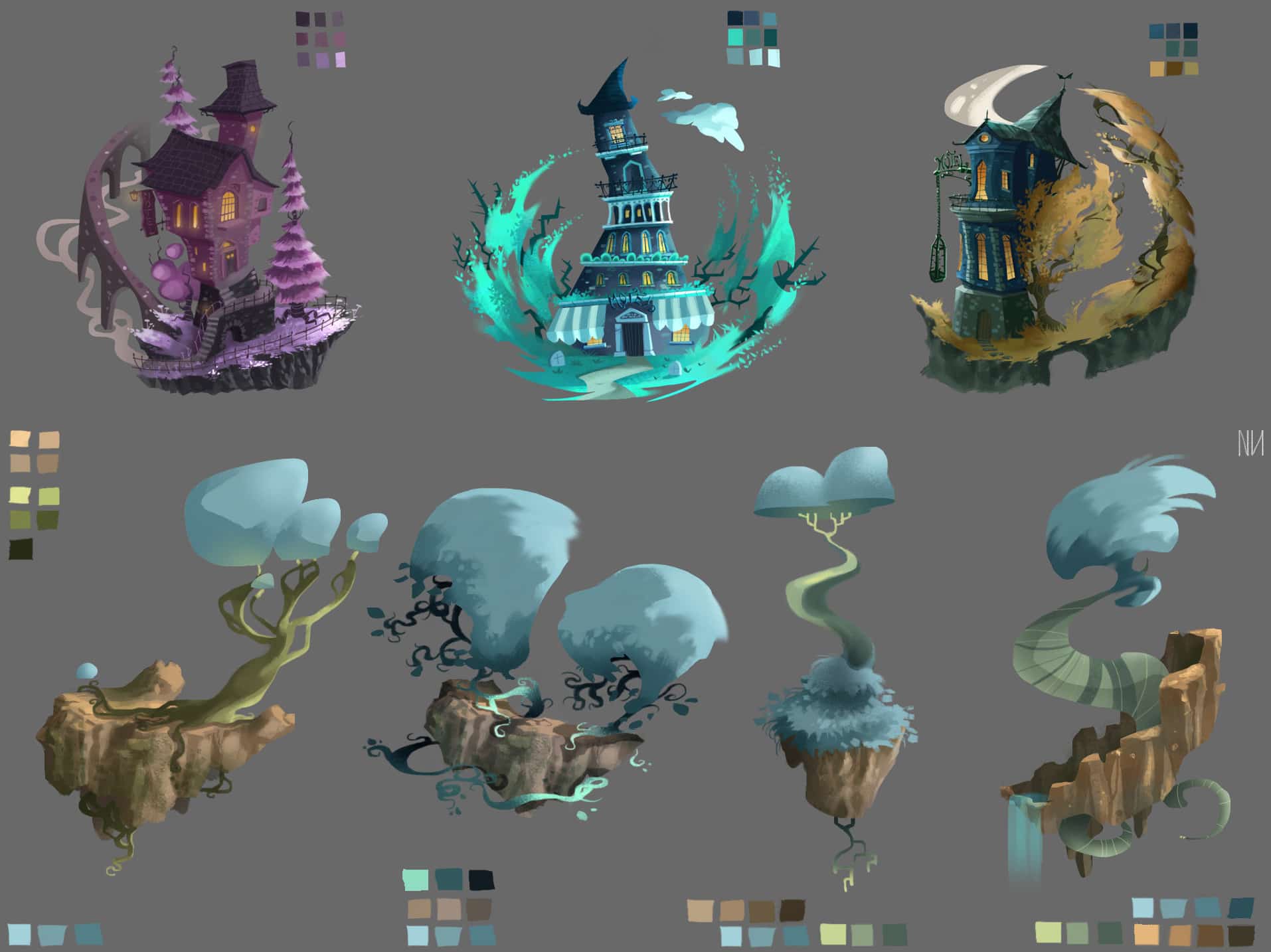
Image via Nuno Nobre
Suggested Approach
The only thing that you should keep in mind is that the best way to improve your prop-designing skills is to practice drawing props as much as you can. Perfect your concepts and finishes. Add more realistic details to whatever you want to design.
However, this doesn’t mean you should neglect other concepts such as figure drawing or so. And better yet, once the fundamentals of these designing concepts get clear to you, it will help you decide what exactly is it that you want to take up in this field and put more emphasis on those parts accordingly.
References and tips
Remember that all of these efforts will go into making a fantastic props design portfolio. So, it should serve as a goal and an incentive for you to practice what you’re doing and get better at it.
You could check out some of these book recommendations for drawing from imagination or for sharpening your digital structuring abilities and skills.
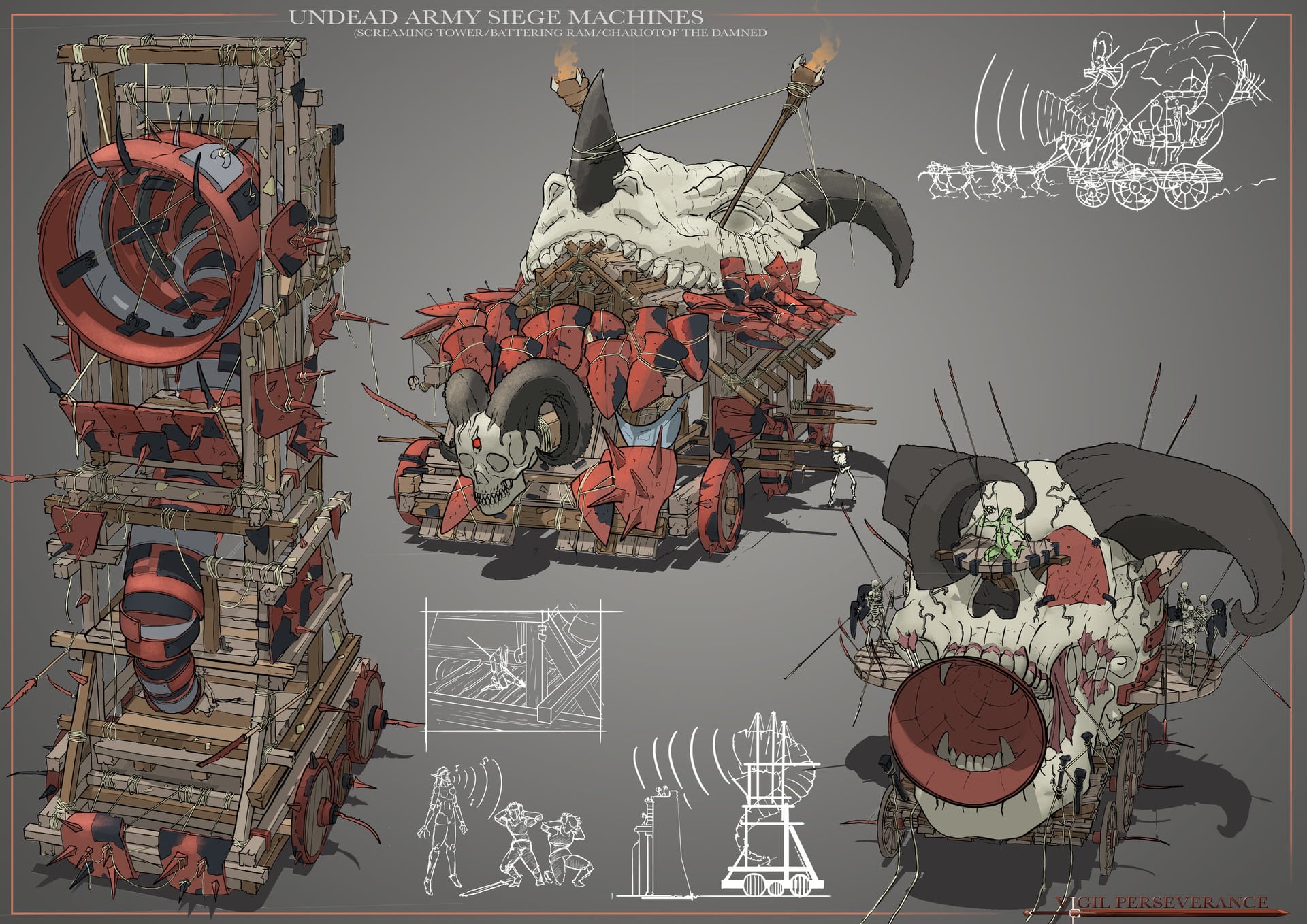
Image via Cem Alpay
About the Industry
If you are aspiring to be a concept artist or just starting out in the field, it is likely that you wouldn't know much about the mechanisms of the industry.
Well, it is absolutely needless to say that it is a massive one and incredibly competitive in every segment and department that lie within it.
The industry is run by a number of creative head personnel in each department, a number of publishers to take care of the written work and a considerable body consisting of top-notch artists or designers as you may call them.
Along with experts in the technical departments, their creative-heads and mentors, these artists weave sheer fantastical magic on to the screen putting life into some of the most incredible and unbelievable creatures to entertain you.
And if you desire to join the team, then hard work to perfect your skills is all that you should focus on creating a flawless concept art portfolio.
This could mean practicing drawing and sketching for up to 8 hours in a single day on a single piece of art (if need be) for as many days as you could possibly devote to your cause.
The industry is significantly competitive, and it’s not going to be easy. Rejections may be the norm for some time initially.
But, if you have the confidence to be one of the best illustrators and the tenacity to hold on, then you the stars will align for you just right eventually.
One of the things that the industry professionals look forward to is sharing bits and snippets from their journeys and teach the newcomers the tricks of the trade. This fills them in on how the industry works.
Art Podcasts
A great way to fill up some time while drawing is to listen to art concept art or digital art podcasts. You will get a bunch of these on the web easily. Apart from being immensely helpful for your line of work, but they are excellent spirit boosters that keep you motivated, interested, and focused on your work.
Some that you could check out right now are:
- Chris Oatley Podcast
- Lean Into Art Podcast
- Syn Studio Art School
- FZD School
- Will Terrel
Conclusion
And that was it for our extensive guide on types of concept art that you could pursue today.
We hope we were able to provide you with all the vital insights into the subject and the workings of the industry in general.
And we sincerely wish you all the very best and all success in your future endeavors in the field!
Till next time!
Related Articles
53 Best Medibang & FireAlpaca Brushes & Textures For Digital Artists
25 Best Free GIMP Brushes for Drawing & Painting Digitally
20 Free FireAlpaca Brushes for Digital Painting & Drawing
21 Best Manga Studio & Clip Studio Paint Brushes [Free Download]
Best Free Aseprite Tutorials For Pixel Artists & Game Designers
21 Best Paint Tool SAI Brushes and Textures
Speed Paintings 101 |What It Is, Tips, Tricks, Tools & Video Tutorials
54 Best Photoshop Brushes | Best Drawing & Painting Brush Packs
80 Best Procreate Brushes for the Realm [Free & Premium Brush Sets]
14 Amazing Free Krita Brushes and Brush Packs for Digital Art
11 Best Color Theory Books for Artists Everywhere
13 Websites With Copyright and Royalty Free Art to Consider
Types of Digital Art Right Now Explained
25 Best Concept Art Books for Artists Everywhere
8 Best Cartooning Books For Artists Today
10 Epic Tips & Tricks for Concept Art Portfolios Today
51 Enigmatic Forest Concept Art That Will Amaze You
67 Surreal Castle Concept Art Depictions to Surge Inspiration From
